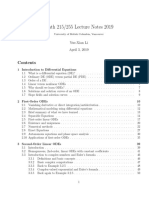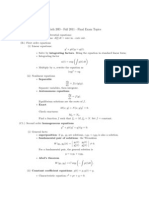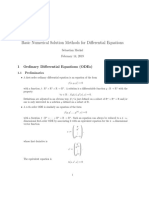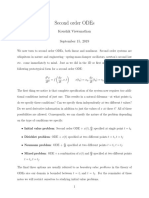0% found this document useful (0 votes)
95 views4 pagesMath 53 Study Guide
This document provides an overview of techniques for solving first and second order differential equations, as well as systems of differential equations. It discusses methods for solving linear, exact, homogeneous, and non-homogeneous ordinary differential equations. It also covers solving systems of ODEs, including analyzing the stability of critical points using eigenvalues. Furthermore, it introduces concepts like the Laplace transform, variation of parameters, and determining stability for non-linear systems through linearization.
Uploaded by
BabujiCopyright
© © All Rights Reserved
We take content rights seriously. If you suspect this is your content, claim it here.
Available Formats
Download as PDF, TXT or read online on Scribd
0% found this document useful (0 votes)
95 views4 pagesMath 53 Study Guide
This document provides an overview of techniques for solving first and second order differential equations, as well as systems of differential equations. It discusses methods for solving linear, exact, homogeneous, and non-homogeneous ordinary differential equations. It also covers solving systems of ODEs, including analyzing the stability of critical points using eigenvalues. Furthermore, it introduces concepts like the Laplace transform, variation of parameters, and determining stability for non-linear systems through linearization.
Uploaded by
BabujiCopyright
© © All Rights Reserved
We take content rights seriously. If you suspect this is your content, claim it here.
Available Formats
Download as PDF, TXT or read online on Scribd
/ 4






















































































